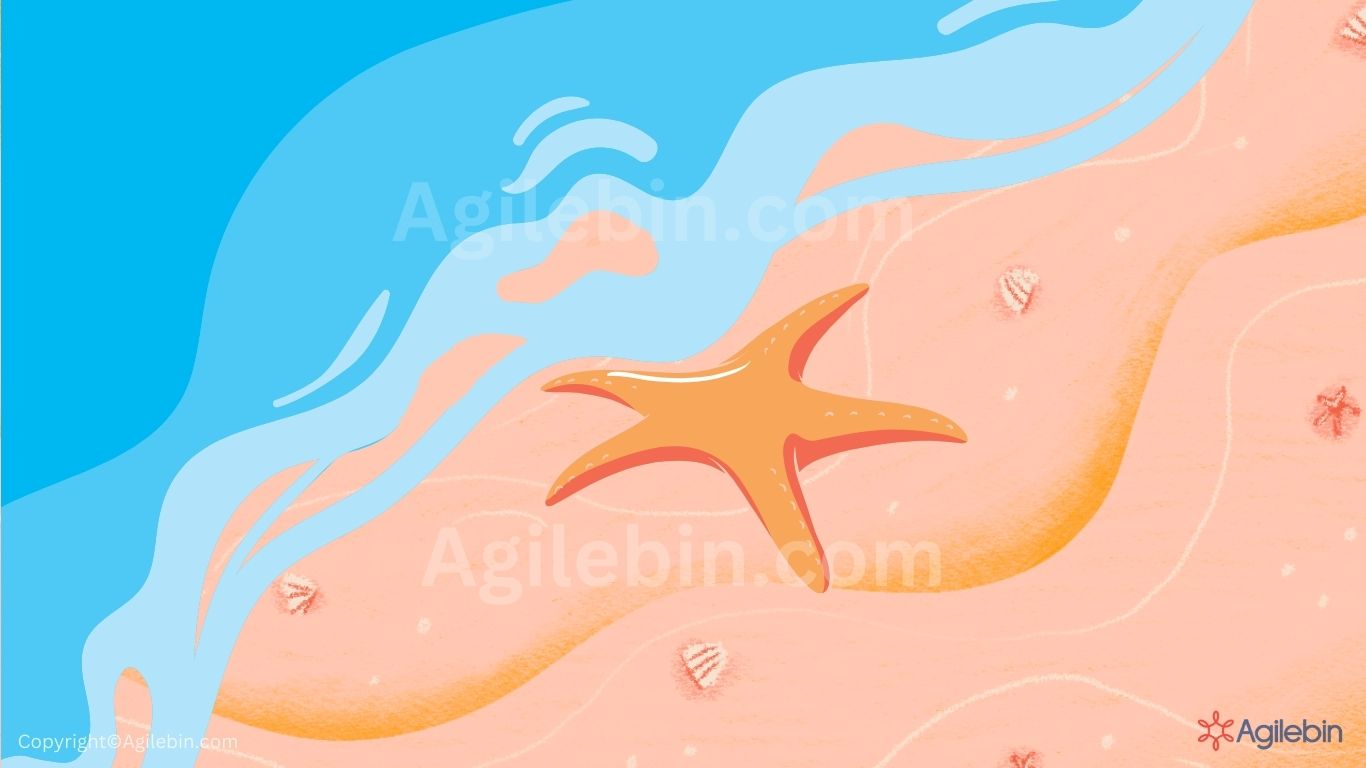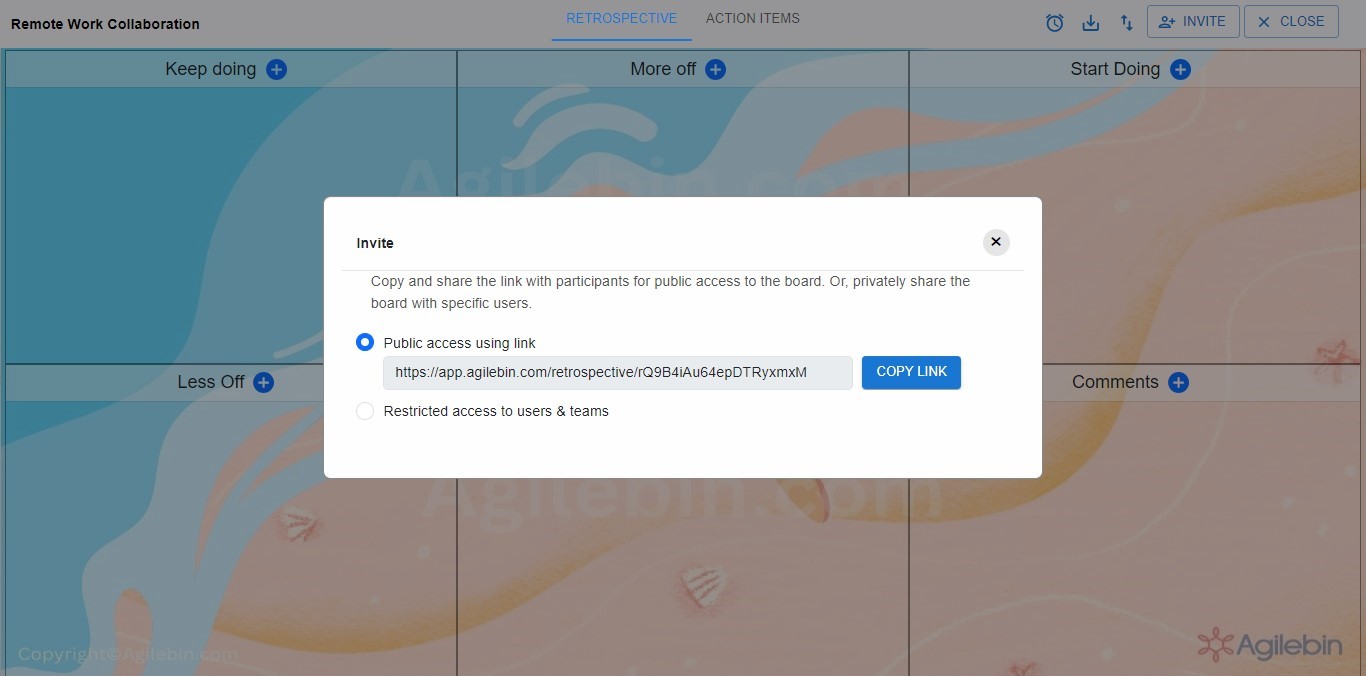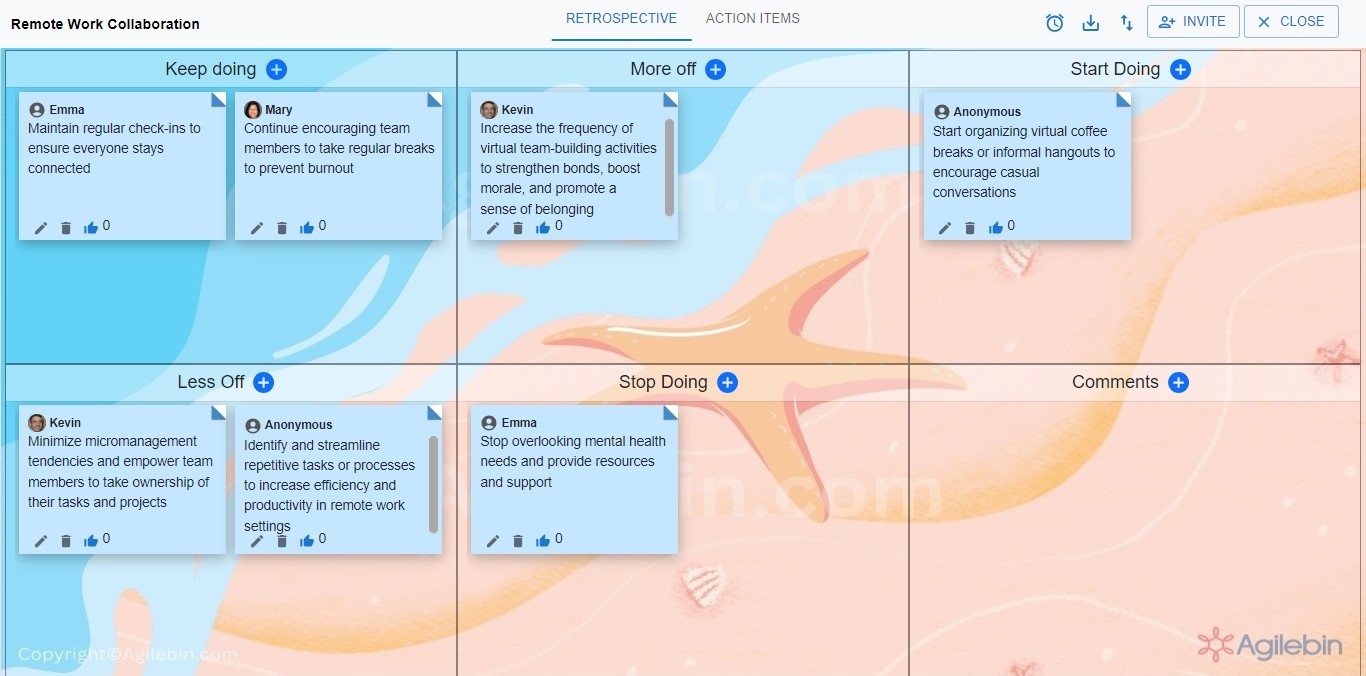Starfish Retrospective
A simple, effective method for teams to reflect on recent activities and identify areas for improvement.

What is Starfish Retrospective?
The Starfish Retrospective is a type of retrospective meeting format commonly used in Agile and Scrum teams to reflect on their recent activities and identify areas for improvement. It takes its name from the five points of a starfish, each representing a different aspect of the retrospective discussion. In this format, team members brainstorm and discuss ideas related to each point, aiming to generate actionable insights for continuous improvement. The format encourages open communication, collaboration, and a focus on practical outcomes that can lead to positive changes in the team's processes and practices.
How to Run Starfish Retrospective?
To run a Starfish Retrospective, follow these steps
- Set up five columns labeled as "Keep Doing", "More of", "Less of", "Stop Doing", and "Start Doing".
- Participants write down their thoughts or feedback on sticky notes and place them in the respective columns.
- Discuss the notes in each column as a team, focusing on identifying patterns, common themes, and actionable items for improvement.
- Create an action plan based on the discussions to address the identified areas for improvement.
Columns in Starfish Retrospective
- Keep Doing: List the activities or practices that the team believes are working well and should be continued.
- More of: Identify the activities or practices that the team believes should be done more frequently or in greater quantity.
- Less of: Highlight the activities or practices that the team believes should be reduced or done less frequently.
- Stop Doing: Identify the activities or practices that the team believes are not beneficial and should be stopped altogether.
- Start Doing: List the new activities or practices that the team believes should be implemented to improve productivity or effectiveness.
When to do a Starfish Retrospective
A Starfish Retrospective can be conducted at various stages of a project or within different contexts to facilitate reflection, learning, and improvement. Below are some scenarios and situations where a Starfish Retrospective is particularly valuable:
Scenarios for conducting a Starfish Retrospective
- End of Sprint/Iteration: After completing a sprint or iteration in an Agile framework, teams can conduct a Starfish Retrospective to review their performance, processes, and outcomes. This helps identify what worked well, what could be improved, and what actions should be taken in the next sprint.
- Project Milestones: When reaching significant milestones or completing phases of a project, teams can use the Starfish Retrospective to assess progress, celebrate achievements, and identify areas for further development. This enables teams to refine their approach and ensure alignment with project goals.
- Team Transitions: During team transitions, such as onboarding new members or transitioning team leadership, a Starfish Retrospective can help ensure continuity, knowledge transfer, and alignment among team members. It provides an opportunity to reflect on past experiences, learn from each other, and establish shared norms and expectations.
- After Significant Events: Following major events like product releases, customer feedback sessions, or critical incidents, a Starfish Retrospective can provide valuable insights for future planning and actions. It allows teams to capture lessons learned, address issues or concerns, and capitalize on opportunities for improvement.
- Regular Cadence: Some teams incorporate regular retrospectives, including the Starfish format, into their workflow, conducting them at fixed intervals regardless of specific project milestones. This consistent cadence fosters a culture of continuous improvement, collaboration, and learning within the team.
How can you conduct a Starfish retrospective with Agilebin?
Effortlessly conduct a Starfish retrospective with Agilebin's ready-to-use template!
Why Agilebin's template? Because it provides a realistic and immersive experience, making your Starfish retrospective feel authentic and meaningful. With Agilebin's ready-to-use template, you'll feel like you're navigating through the actual process, allowing for a more effective and insightful retrospective session.
Choose Starfish retrospective template in Agilebin
Choose the Starfish Retrospective template from Agilebin's collection of retrospective templates. This template is specifically designed to facilitate the Starfish Retrospective process, providing a structured framework for your team's reflection and improvement discussions
Invite team members to participate in the retrospective session
Invite team members to participate in the retrospective session by adding their email addresses or sharing the session link directly with them. You can choose between public access using a link, allowing anyone with the link to join, or restricted access, limiting participation to specific users or teams.

Facilitate Discussion with Sticky Notes
Agilebin offers pre-defined columns for the Starfish Retrospective, including "Keep Doing," "More of," "Less of," "Stop Doing," and "Start Doing." Participants can add sticky notes to each column during the retrospective session, sharing their feedback, observations, and suggestions
